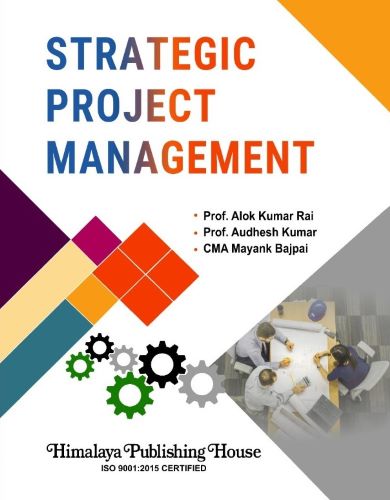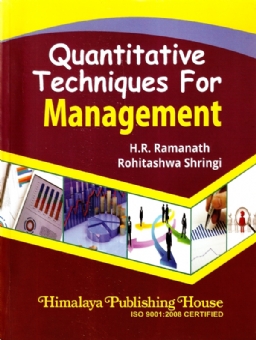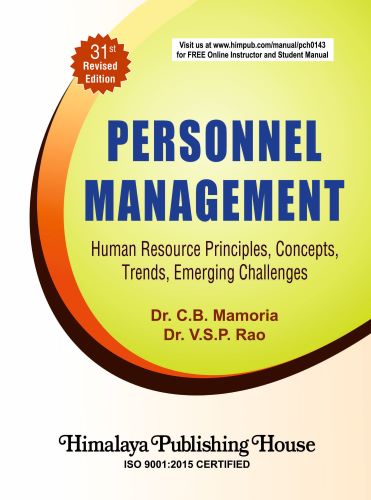Project Management and Strategy are imperative to each other, and decisions are rarely straightforward or simple. This is because they involve value judgements that depend to a large degree on people’s attitudes, perception and assumptions. By understanding the forces that shape decisions in Project Management today or which will become part of the management agenda in the future, we are better able to understand the context for Strategic Project management. Coming up with ideas and solutions that are rooted in the experiences and behaviours of the past is of limited value. What matters more is an appreciation of the forces shaping business strategy, the ideas influencing decisions and the pitfalls of strategic thinking, resulting in more effective strategic decisions in this book “Strategic Project Management”.
Contents –
Chapter 1: Introduction and Overview
– Introduction to Strategic Management
– Introduction to Strategic Management
– Strategy and Corporate Evolution in Indian Context
– Nature and Scope of Strategic Management
– Strategic Management Process, Strategists and their Role
– Case Study: Strategic Management Process and the Role of Strategists in Tata Motors
– Hierarchy of Strategic Internet: Vision, Mission, Goals and Objectives
– Case Study: Starbucks Coffee Company
– Case Study: Apple Inc.
– Strategic Management in Multinational Firms
– Strategic Management in Action: Case Example of Coca-Cola
– Integrating Sustainability into Strategy
– Case Study: Unilever
– Questions
Chapter 2: Strategic Levels, Strategic Analysis and Choice
– Levels of Strategy
– Grand, Stability, Expansion, Retrenchment and Combination Strategies
– Case Study: General Electric (GE)
– Case Study: General Electric (GE) – Application of Company-Level Strategies
– Case Study: The Walt Disney Company
– Case Study: Netflix’s Strategic Choices and Evaluation
– SWOT Analysis, Corporate Portfolio Analysis, Merger and Acquisition, Strategic Alliances, Joint Ventures
– Questions
Chapter 3: Role of Strategic Issues in Decision-making
– Investment Decisions
– Risk Analysis in Capital Budgeting: Sensitivity Analysis and Certainty Equivalent Approach
– The CAPM Approach: Adjusting Cost of Capital for Risk
– Case Study: Evaluating the Cost of Capital at Tesla, Inc.
– Financing Decisions
– Case Study: Apple Inc.
– EBIT-EPS Analysis
– Theories of Dividend Gordon Model, Walter Model, MM Hypothesis
– Understanding Risk and Return
– Case Study: The San Francisco Bay Bridge Reconstruction
– Questions
Chapter 4: Strategy Implementation and Evaluation
– Strategy Implementation
– Operational Implementation
– Balancing Functional and Operational Implementation
– Case Study: Starbucks’ Global Expansion Strategy Implementation
– Strategic Leadership, Functional Strategies
– Strategic Plans and Policies
– Case Study: Apple Inc.
– Techniques of Operational and Strategic Control
– Operational Control Techniques
– Strategic Control Techniques
– Integrating Operational and Strategic Control
– Questions
Chapter 5: Strategic Business Forecasting and It’s Techniques
– Strategic Business System
– Forecasting – Meaning, Characteristics, Needs, Significance and Factors affecting Business Forecasting
– The Role of Technology in Enhancing Forecasting
– The Impact of Technology on Forecasting
– Case Study: Nestlé India
– Forecasting and Analysis
– Utility Analysis
– Utility Maximisation
– Case Study: Ford Motor Company
– Case Study: Starbucks Coffee Company
– Interrelationship between Cost, Price and Profit
– Case Study: The Technology Sector in Silicon Valley
– Case Study: The Tech Industry in Silicon Valley
– Case Study: Optimal Input Combinations in Agriculture
– Questions
Chapter 6: Strategic Risk Management
– Introduction to Strategic Risk Management
– Importance in Strategic Planning
– Types of Strategic Risks
– Operational Risks
– Financial Risks
– Case Study on Financial Risk: The Lehman Brothers Collapse
– Key Lessons and Takeaways
– Compliance Risks
– Risk Mitigation Strategies
– Case Example: Risk Assessment and Mitigation in the Banking Sector
– Benefits of Risk Assessment and Mitigation
– Identifying and Analysing Risks
– Benefits of Effective Risk Identification and Analysis
– Risk Mitigation Strategies
– Types of Risk Mitigation Strategies
– Implementing Risk Mitigation Strategies Effectively
– Crisis Management and Contingency Planning
– Crisis Management
– Contingency Planning
– Integrating Crisis Management and Contingency Planning
– Strategic Risk Management Frameworks
– Common Strategic Risk Management Frameworks
– Enterprise Risk Management (ERM)
– Scenario Planning and Stress Testing
– Scenario Planning
– Benefits of Scenario Planning:
– Stress Testing
– Types of Stress Testing
– Benefits of Stress Testing
– Integration of Scenario Planning and Stress Testing
– Case Study: Scenario Planning and Stress Testing at Unilever
– Case Study: Scenario Planning and Stress Testing at Tesla
– Strategic Risk Management in Practice
– Conclusion
Chapter 7: Innovation and Strategic Renewal
– Introduction to Innovation and Strategy
– Strategic Innovation Alignment
– Measuring the Impact of Innovation on Strategy
– Creating a Culture of Innovation Aligned with Strategy
– The Role of Innovation in Business Growth
– Innovation as a Driver of Competitive Advantage
– Innovation as a Tool for Market Expansion
– Operational Efficiency and Cost Reduction
– Innovation’s Role in Customer Retention
– Innovation and Long-term Sustainability
– Strategic Renewal and Transformation
– Strategic Renewal: Adapting to Change
– Strategic Transformation: A Fundamental Shift
– The Need for Strategic Renewal and Transformation in the Modern Business Landscape
– Implementation of Strategic Renewal and Transformation
– Identifying the Need for Renewal
– External Factors Indicating the Need for Renewal
– Internal Factors Indicating the Need for Renewal
– The Renewal Process: Steps to Take
– Strategies for Business Transformation
– Key Strategies for Business Transformation
– Managing Innovation
– Open Innovation and Collaboration
– Benefits of Open Innovation
– Types of Open Innovation
– Collaboration in Open Innovation
– Case Study: Procter & Gamble (P&G)
– Forming and Managing Strategic Alliances
– Forming Strategic Alliances
– Managing Strategic Alliances
– The Role of Partnerships in Innovation
– Access to Diverse Knowledge and Expertise
– Sharing Resources and Reducing Costs
– Speeding Up Time to Market
– Increased Market Reach
– Fostering a Culture of Innovation
– Case Study: Apple and Corning
– Case Studies
– Conclusion
– Customer-centric Innovation
– Investment in Talent and Collaboration
– Technological Advancement and Digital Transformation
– Managing Innovation Risks
– Measuring and Monitoring Innovation
– Adapting to Disruption
– Questions
Chapter 8: Future Trends in Strategic Management
– Introduction to Emerging Trends
– Digital Transformation and Strategy
– Leveraging Data and Analytics in Strategic Decision-making
– Sustainability and Strategic Management
– The Role of ESG (Environmental, Social and Governance) in Strategy
– Future Directions in Sustainable Business Practices
– Strategic Management in Uncertain Times
– Risk and Uncertainty of Markets
– Scenario Planning for the Future
– Case Studies
– Future-Oriented Strategies of Leading Companies
– Conclusion
– Questions







